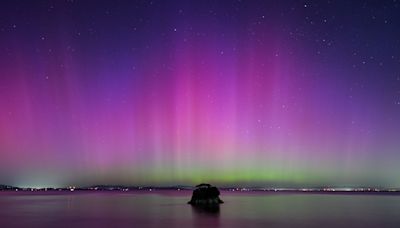Search results
Daily results are presented here on Spaceweather.com. On Sep 28, 2024, the network reported 11 fireballs. (11 sporadics) In this diagram of the inner solar system, all of the fireball orbits intersect at a single point--Earth. The orbits are color-coded by velocity, from slow (red) to fast (blue).
Daily monitoring of solar flares, geomagnetic storms, Earth's aurora, and all forms of space weather.
SPACE WEATHER BALLOON DATA: Almost once a week, Spaceweather.com and the students of Earth to Sky Calculus fly space weather balloons to the stratosphere over California. These balloons are equipped with sensors that detect secondary cosmic rays, a form of radiation from space that can penetrate all the way down to Earth's surface.
Nov 1, 2000 · Daily monitoring of solar flares, geomagnetic storms, Earth's aurora, and all forms of space weather.
NOAA Report on Geophysical and Solar Activity. Solar Activity report issued: Recent Conditions: : 24-hour Forecast: : Geomagnetic Activity report issued: Recent Conditions: : 24-hour Forecast: : Current conditions and forecast of solar and geomagnetic storms, prepared by NOAA.
Earth does travel around the Sun, but the path is not a perfect circle. It's an ellipse, slightly lopsided. One end is a bit closer to the Sun than the other. On January 4th, 2006, our planet is at the closer end--a point astronomers call "perihelion."
Flares produce a burst of radiation across the electromagnetic spectrum, from radio waves to x-rays and gamma-rays. [more information] Scientists classify solar flares according to their x-ray brightness in the wavelength range 1 to 8 Angstroms.
Visit SpaceWeather.com and find out what's up in space today! Sample Sounds courtesy of NASA's INSPIRE program. Sferics: Sferics, short for "atmospherics", are impulsive signals emitted by lightning. They sound like twigs snapping or bacon frying.
Summary: The longest solar eclipse of the 21st century took place on July 22, 2009. The Moon's shadow swept across India, China, parts of Japan and the Pacific Ocean, lingering in some places for as long as 6 minutes and 39 seconds.
A powerful space-based observatory could see even more -- say, 50 to 100. Which is the correct sunspot number? There are two official sunspot numbers in common use.





